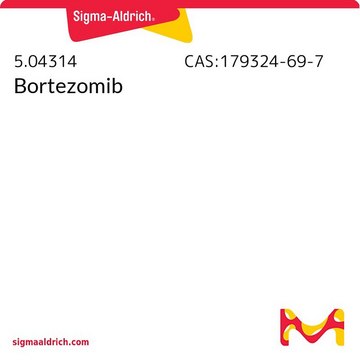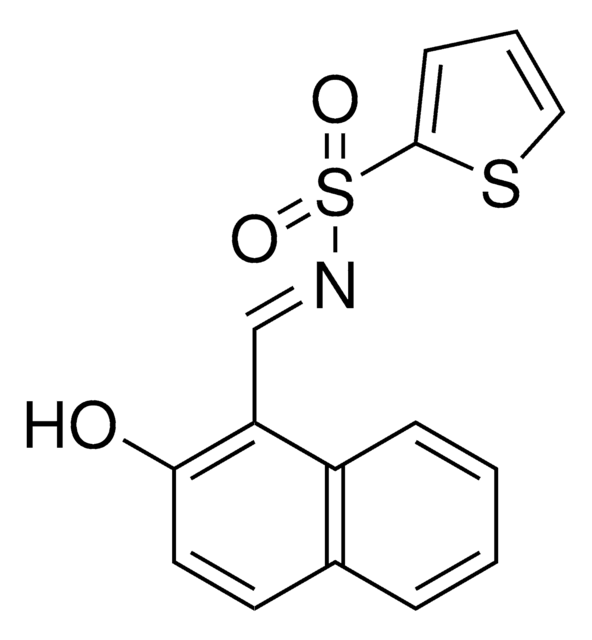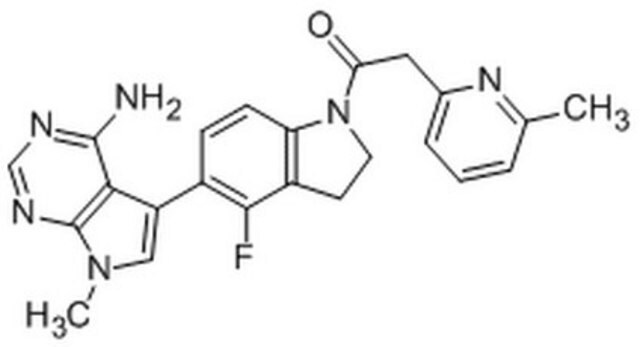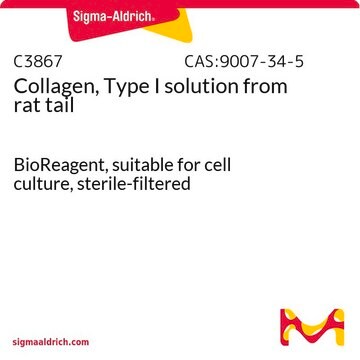412512
IRE1 Inhibitor III, 4μ8C
IRE1 Inhibitor III, CAS 14003-96-4, is a cell-permeable. Covalent inhibitor of IRE1 RNase activity (IC₅₀ = 550 and 45 nM, respectively, with 0 & 16 min preincubation in RNA cleavage assays).
Synonim(y):
8-Formylo-7-hydroksy-4-metylokumaryna, 7-hydroksy-4-metylo-2-okso-2H-chromeno-8-karbaldehyd, ER-to-Nucleus Signaling 1 Inhibitor III, Inositol-Reguiring Protein 1 Inhibitor III
About This Item
Polecane produkty
Poziom jakości
Próba
≥95% (HPLC)
Formularz
powder
producent / nazwa handlowa
Calbiochem®
warunki przechowywania
OK to freeze
protect from light
kolor
yellow
rozpuszczalność
DMSO: 25 mg/mL
Warunki transportu
ambient
temp. przechowywania
2-8°C
ciąg SMILES
O=C(C=C1C)OC2=C1C=CC(O)=C2C=O
InChI
1S/C11H8O4/c1-6-4-10(14)15-11-7(6)2-3-9(13)8(11)5-12/h2-5,13H,1H3
Klucz InChI
RTHHSXOVIJWFQP-UHFFFAOYSA-N
Opis ogólny
Działania biochem./fizjol.
IRE1
Opakowanie
Ostrzeżenie
Rekonstytucja
Inne uwagi
Informacje prawne
Kod klasy składowania
11 - Combustible Solids
Klasa zagrożenia wodnego (WGK)
WGK 3
Temperatura zapłonu (°F)
Not applicable
Temperatura zapłonu (°C)
Not applicable
Certyfikaty analizy (CoA)
Poszukaj Certyfikaty analizy (CoA), wpisując numer partii/serii produktów. Numery serii i partii można znaleźć na etykiecie produktu po słowach „seria” lub „partia”.
Masz już ten produkt?
Dokumenty związane z niedawno zakupionymi produktami zostały zamieszczone w Bibliotece dokumentów.
Klienci oglądali również te produkty
Nasz zespół naukowców ma doświadczenie we wszystkich obszarach badań, w tym w naukach przyrodniczych, materiałoznawstwie, syntezie chemicznej, chromatografii, analityce i wielu innych dziedzinach.
Skontaktuj się z zespołem ds. pomocy technicznej






![PERK Inhibitor I, GSK2606414 GSK2606414 is a cell-permeable, highly potent inhibitor of EIF2AK3/PERK (IC₅₀ = 0.4 nM; [ATP] = 5 µM). Targets PERK in its inactive DFG conformation at the ATP-binding region.](/deepweb/assets/sigmaaldrich/product/structures/180/559/efa716dc-d5fe-4339-a6f0-0103084fc04a/640/efa716dc-d5fe-4339-a6f0-0103084fc04a.png)




